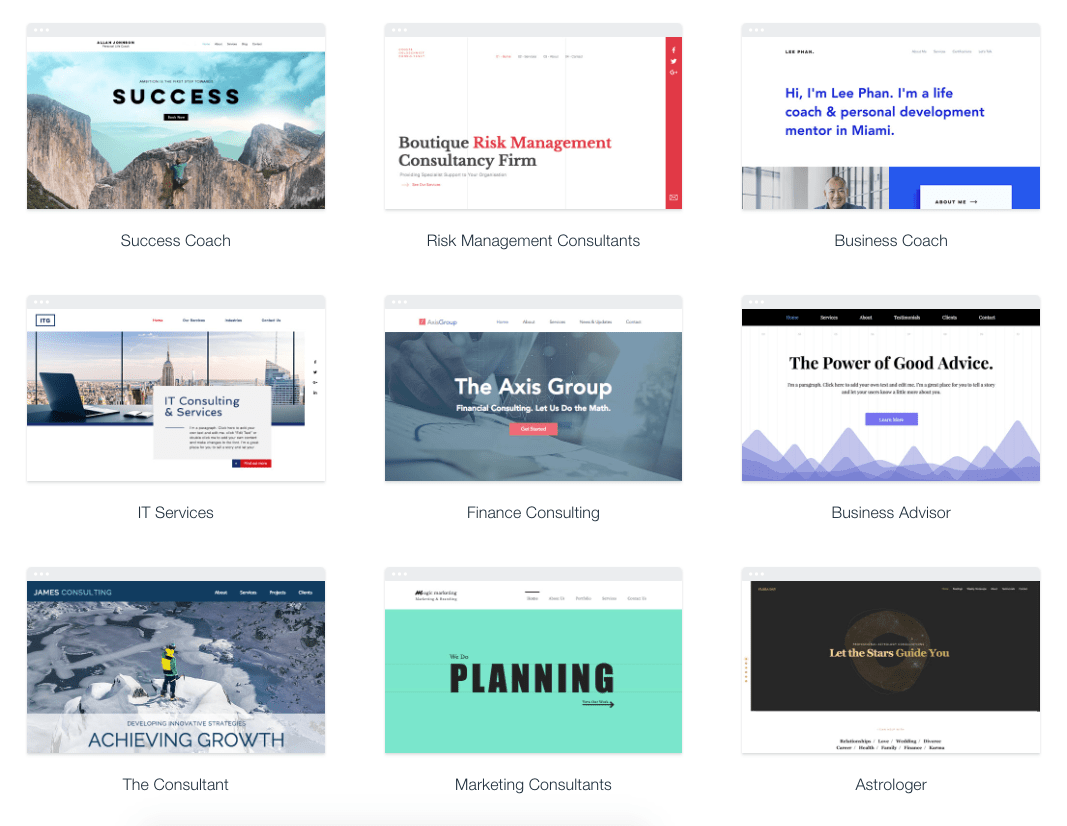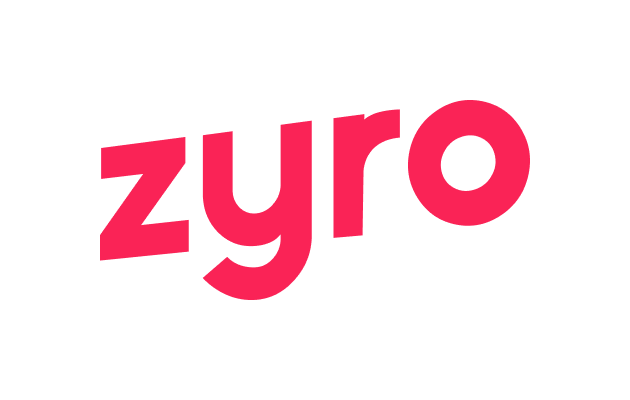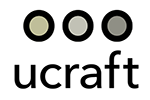Want to jump straight to the answer? The best website builder for most people is Wix.
You want a website—but you’re not a coder. You just want your website to look good, work, and be easy to set up.
Good news: even if you’re not good with coding and developing, you can get a professional-looking website in minutes.
How? With a great website builder.
Nowadays, you can now get a world-class website, build it yourself quickly, and no one will ever know. It looks just like a $100,000 site from some fancy marketing agency.
The designers are that good.
To find the best, I reviewed 31 website builders, testing them on their ease of use, quality of the product, customer support, and pricing. I then narrowed them all down to my top 6 picks for the best website builders.
The 6 Best Website Builders
My top six picks are:
If you’re looking for the easiest way to create a site, a website builder like Wix will certainly get you there. It’s incredibly easy to get started and you’ll get an great website.
But you should also consider building with WordPress. There’s no subscription fee and the options are limitless. It’s not an all-in-one service, but it isn’t hard to sign up for the other pieces you’ll need (a domain name, hosting, and a theme).
Read on for in-depth reviews of my top picks for 2021 and step-by-step guides to setting them up quickly and cost-effectively.
Website Builder Reviews
#1 – Wix
- Automates the tough choices
- Paid plans start at $11 per month
- Free trial period: 14 days
- Traffic and conversion analytics
Wix is easily the best website builder if you’re a beginner or a seasoned pro.
What I love about them is that they’re dead simple to use. Wix’s artificial intelligence asks you a few questions and literally builds your custom website before your eyes. Imagine a genie that magically creates the website you’ve been dreaming about before your eyes. It’s that good.
Wix does have a free tier, but I don’t recommend it. It has some of the most in-your-face “this was not paid for” company branding I’ve seen — an instant trust breaker. Wix free sites also have cumbersome domain structures: yourusername.wix.com/sitename (so we’d be QuickSproutEditorial.wix.com/QuickSprout.)
Connecting your actual domain allows you to attach a Google Analytics profile and add email accounts if you’d like ($5 per account per month, or about half that with an annual plan).
Unfortunately, the pricing isn’t very upfront. Wix wants you to connect your domain before you see the email pricing, for example. I found answers to pricing questions in the support center, not the user flow.
To start creating a Wix website, just click “create site.” You’ll be asked a question: What kind of website do you want to create? From there, the AI will help you build your website. (You can opt-out and go it alone at this point, too, but we appreciated the AI’s help.)
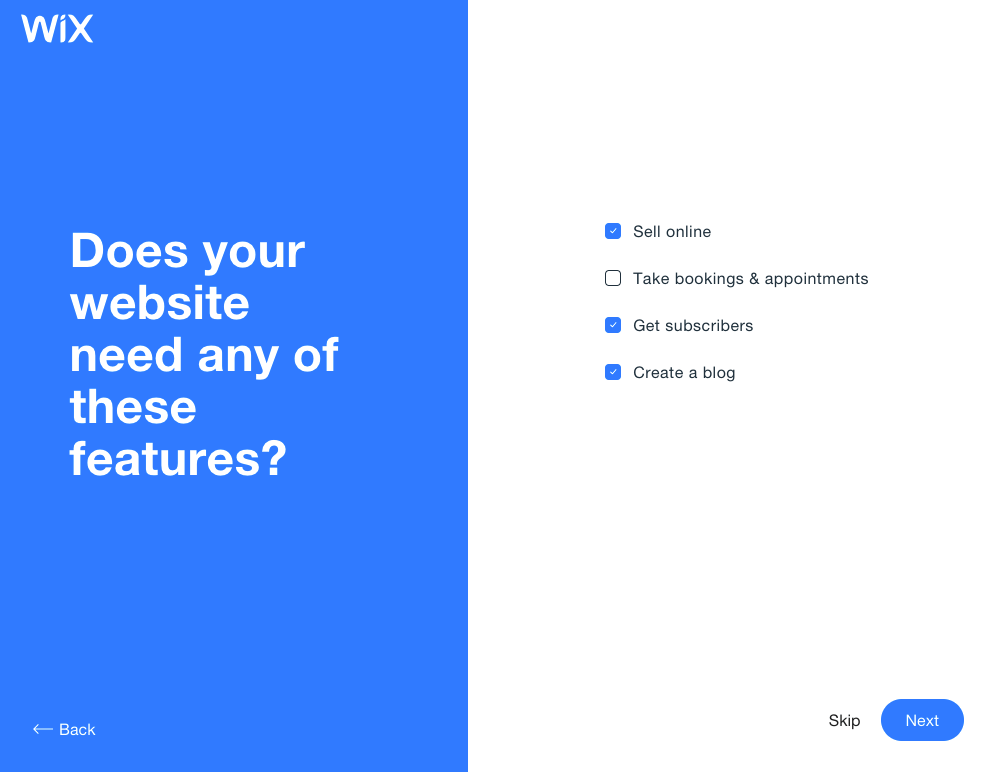
One of the first screens you’ll see when you build a website with Wix.
When I tested Wix, I loved how easy it was to find a template that matched our vision. The AI stayed with me as I edited the page, helping me pick the next thing to edit and showing me how to do it.
The Wix AI matched my new site to my business’ existing online presence, used my logo to create a color palette for my site, pulled right from Instagram, and gave me a template pre-populated with that logo and our street address. Connecting images from existing social media accounts made it easy to pull in all the assets we already owned.
A fun thing to try is to pick a business you already know and see how close Wix’s AI comes to replicating it. I used a local yoga studio as an example and Wix did closely match the studio’s existing site. Even better, I bet they paid a web designer a bit of coin for their design, and I did mine for free with an AI assistant.
>As AI progresses, it will be harder and harder to know which site was built via AI and which was built via a designer. You can think of it like passing a “design turing test”, i.e. in the future humans will not be able to differential between the two. Then, it’ll have to get innovative. Instead of mimicking what it is learning from what’s created, it will get better and more experimental. It’s easy to see how soon most websites that are created use AI in some way.
—Wix VP & GM of Consumer Experience Nitzan Achsaf told TechRadar
There’s a lot of variety between the Wix themes, and the personality of each theme matches its name well. The Business Advisor had a spot-on graphic of an analytics dashboard, while Astrologer features an astral hero image.
Some of Wix’s business-centric themes.
Editing your desktop site with Wix does require some patience. To change the text on a text box, you’ll need to hover precisely in the right spot. I did some deep breathing and was able to find enough inner zen to make all the changes I wanted. The mobile editor has the helpful feel I wish the rest of the editor maintained. It’s super easy to click through the options for how your menu, quick actions, and scroll options work on your mobile page. What you change in the mobile editor doesn’t affect anything that happens on desktop.
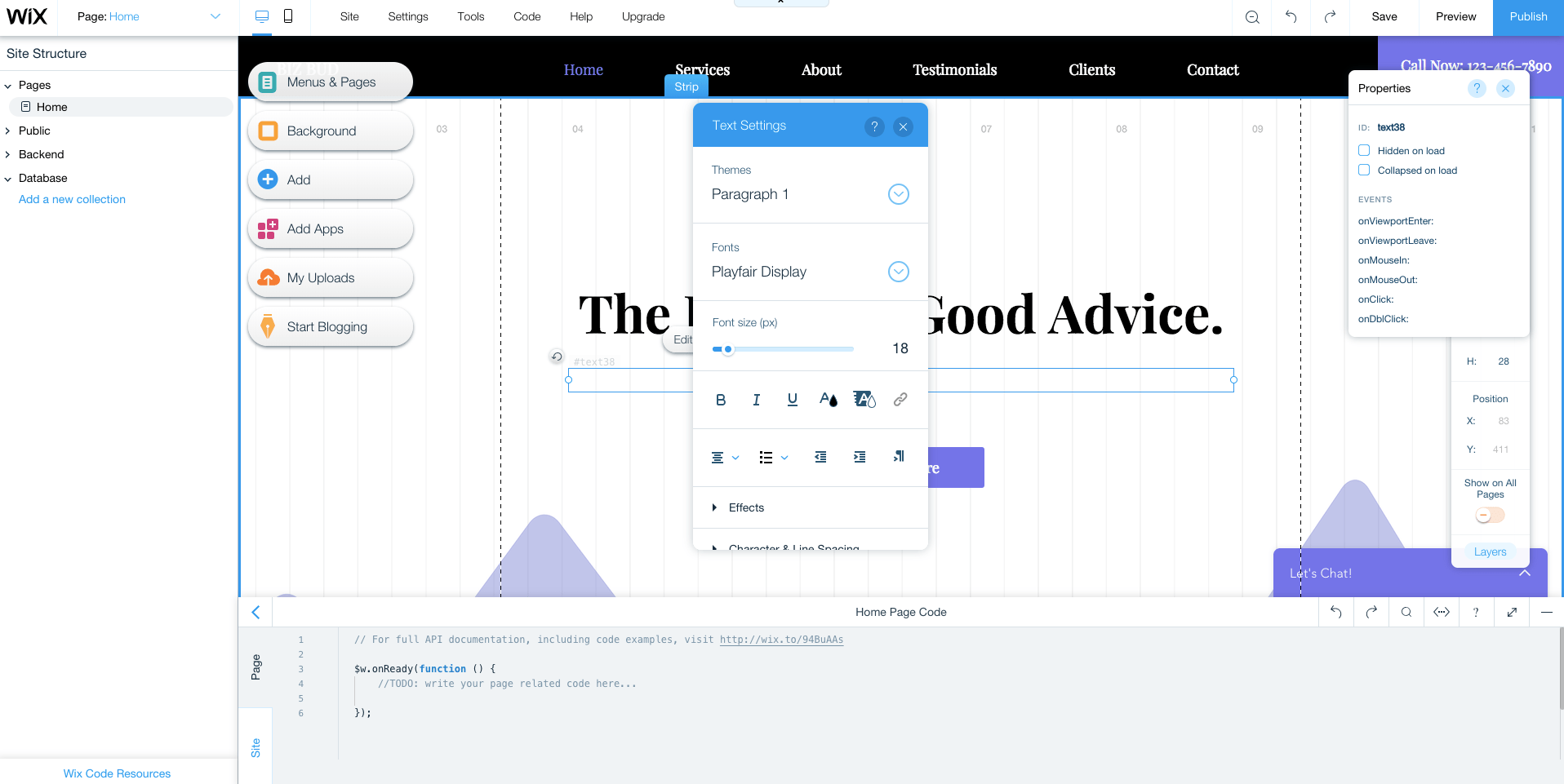
Wix’s editor requires patience — and some clicking around.
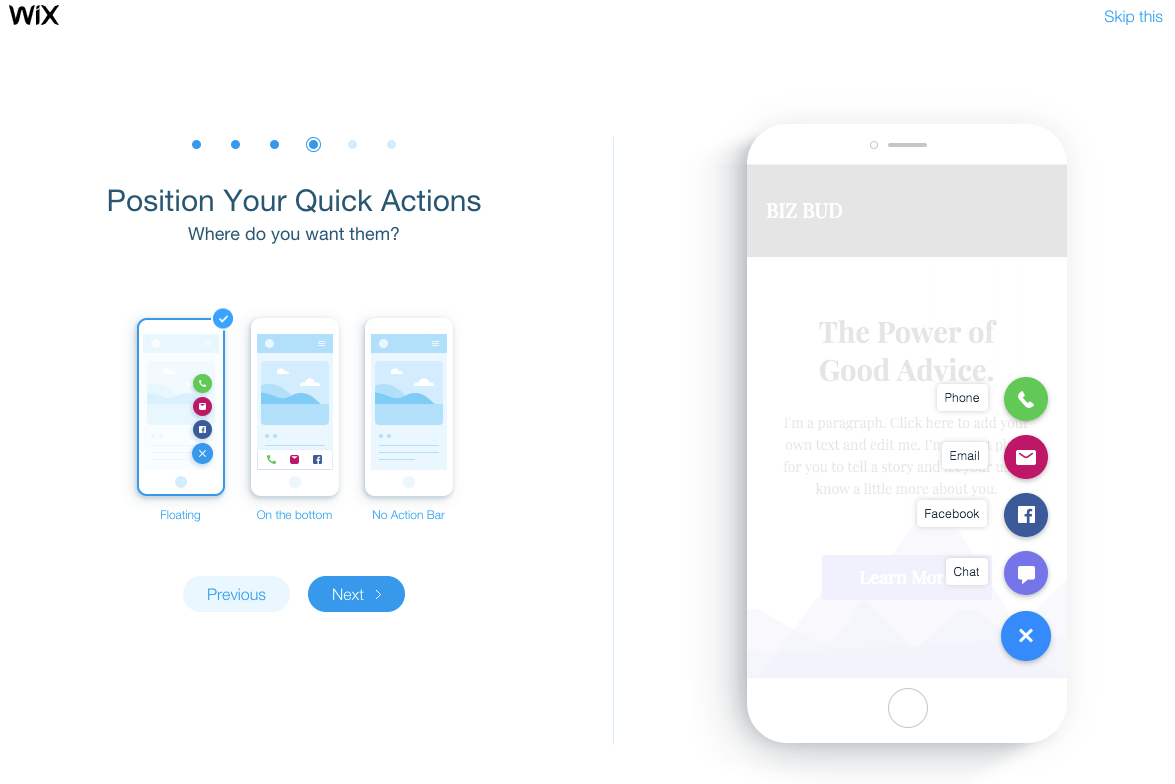
I prefer the easier-to-use mobile editor.
Take note: all of Wix’s plans are automatically set to auto-renew. Sticker shock is real, especially if you signed up with an introductory promo pricing (at the time of publishing, premium plans were a full 50% off, for example).
There are many frustrated customers on TrustPilot who’re unhappy with this. It is possible to turn off your auto-renew, but you’ll need to do it more than 14 days before your plan’s anniversary — and if you do it during your 14-day free trial, your trial will be canceled immediately.
As for which paid plan to pick, you have 7 options: 4 “regular” and 3 “ecommerce.” The difference really boils down to whether you’ll be accepting payments on your site or not. If you’re not sure about how much bandwidth you need, you can always start with a smaller subscription: if you go over the limit, you’ll get a notice from Wix (with no penalty) and can use that as your signal to upgrade.
#2 – WordPress with BlueHost Hosting
- Auto WordPress Install
- Free domain name
- 24/7 Support
- 30-Day Money-Back Guarantee
I love WordPress.
In fact, we run Quick Sprout on WordPress. That’s because it is incredibly flexible and customizable to our exact specifications.
I’d recommend anyone starting a website really consider starting it with WordPress, especially if you’re running a content site.
WordPress runs a third of the internet and it has the best content management system — all for free. Some huge names you’ll recognize run their sites on WordPress.
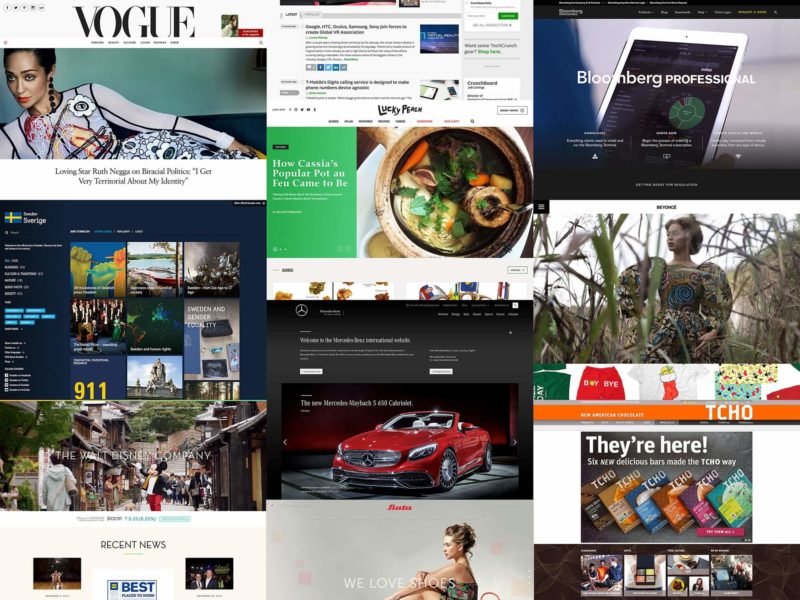
If you run WordPress you’ll be in fine company, including Vogue, Lucky Peach, and Beyonce’s own website.
Because WordPress is so popular there’s a huge community of developers and designers creating themes and plugins for you to use.
But this comes with a caveat: Unlike other website builders, WordPress isn’t a one-stop shop. You’ll also need a domain name and a web host.
Our cheat code: Sign up for BlueHost. It’s one of the most reliable, popular web hosts out there.
In just a single click, you’ll be able to get started with your WordPress website. In fact, BlueHost is one of the hosts that WordPress recommends. That’s because it’s ready-made for the platform.
I like BlueHost because it works well with WordPress and you’re able to get a free domain name with any plan.
Once you’ve gotten your domain name and your web host at BlueHost, you’ll be able to install WordPress within a few minutes and get your login credentials. They don’t call it WordPress.org’s “famous 5-minute installation” for nothing.
Log in and you’ll see that your site is pre-loaded with a starter theme. Using as different one? Simply install it. From here, you’re set to adjust your site’s settings, menus, and page structure, and start writing blog posts. WordPress is hands down the winner when it comes to running a content-driven site.
If you need help at any point, there are tons (literally tons) of guides on the internet. I recommend starting with WordPress’s support page, which will answer questions like Where to start, Writing posts, and Using themes.
Check out our full guide on how to create a website with WordPress!
#3 – Zyro
- Drag and drop website builder
- Plans start at $3.19/mo
- 30-day money-back guarantee
- Ecommerce functionality
Zyro is an easy-to-use website builder that comes at an incredible price point.
In fact, their plans start out at just $3.19 per month. That’s for the Basic plan that includes a 4-year contract. However, you end up saving $614.40 as a result. That’s an excellent deal.
What you get in return is an excellent drag-and-drop website builder. Zyro allows you to easily customize the look and feel of your website. You’ll also be able to see those changes in real time.
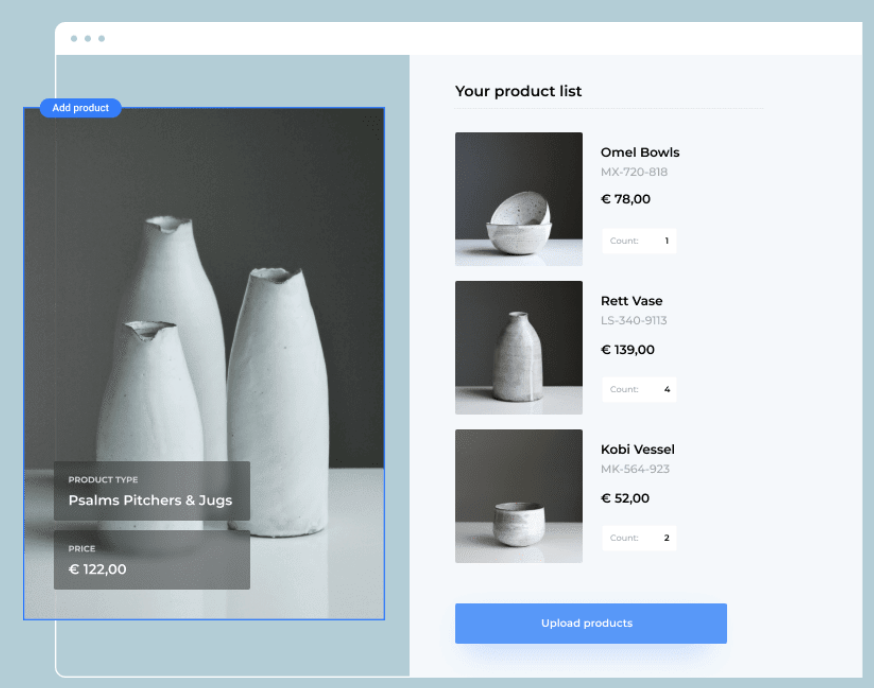
Within minutes of signing up, you’ll be able to create that blog, ecommerce site, or business website to start making money.
Their ecommerce functionality is also top notch. Zyro allows you to sell and promote products across the Internet, including on powerful ecommerce platforms like Instagram, Amazon, and Facebook.
Perhaps their most unique feature is their AI business tool. They leverage the power of machine learning to give you tings like a slogan generator, business name generator, logo maker, and AI heatmap so you know where your customers are clicking.
Overall, it’s a great choice for beginners looking to make an ecommerce or business website. Get started now.
#4 – Squarespace
- Stellar templates
- Plans start at $12 per month
- Free trial period: 14 days
- Clunky interface
Squarespace wins the design and beauty contest here.
That’s because they offer thousands of award winning templates to help you easily build a great looking website.
Seriously, you could be phoning it in and the page you’ll end up publishing will be phenomenally good-looking.
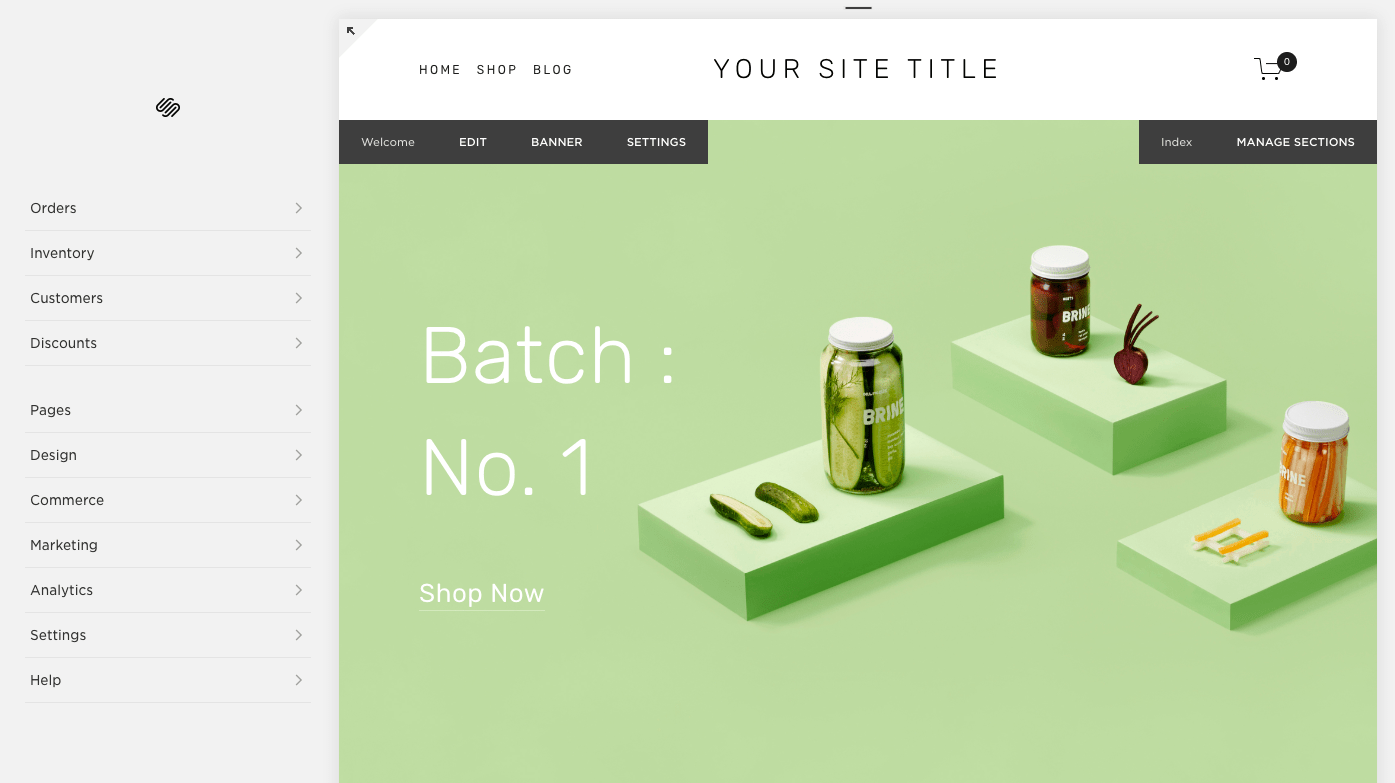
Squarespace’s templates are all modern and beautiful.
Building a website with Squarespace can feel a little like building IKEA furniture: in the showroom it’s all so beautiful and simple, but somehow it feels a little more complicated to put together than promised. It can be hard to understand where exactly you are in the Squarespace editor.
I kept getting notifications that I was editing demo content, or that I’d see the social logos once we connected our social media, or that we could unlock this or that feature with a paid subscription, but Squarespace didn’t go the extra step to make it easy to make that required move.
It was a lot of fumbling through a beautiful interface, not exactly sure what changes were real, or where to head next. I also had some issues saving changes — an error message popped up and we had to move on, without our changes.
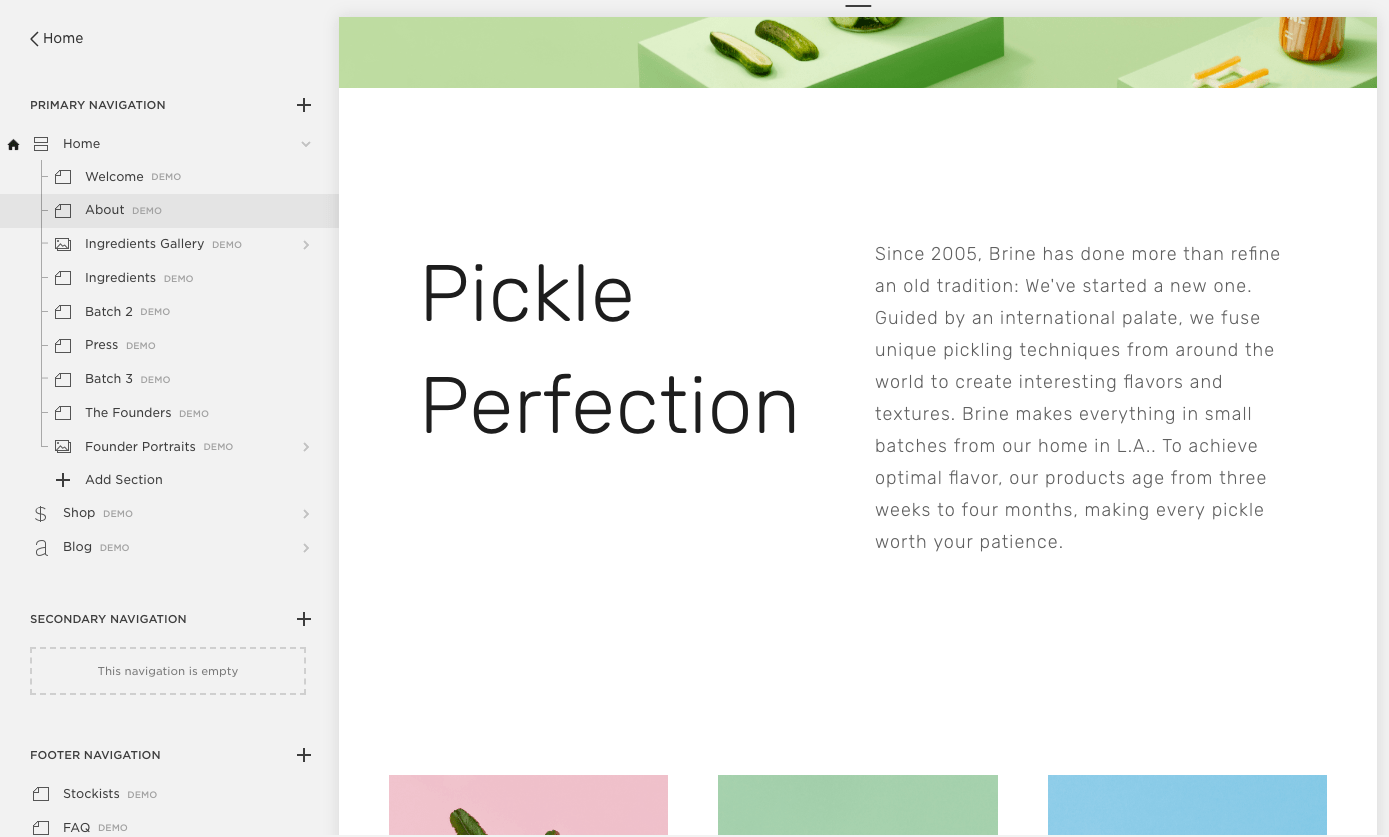
Editing a site in Squarespace has a bit of a learning curve.
Unlike IKEA, Squarespace is pricier than other website builders.
That being said, I love the way sites built with Squarespace look, and think it’s one of the simplest ways to create a beautiful, contemporary site.
#5 – Ucraft
- Free one-page sites
- Paid plans start at $10 per month
- Free trial period: 14 days
- Ecommerce features available
If you need something super simple, you may be happy with the free Landing Page option from Ucraft: you can create a single, mobile-ready page and connect your domain for free. The free version doesn’t get rid of the Ucraft branding but it’s minimal and non-invasive. The template has all the features I’ve identified in my anatomy of a high-converting landing page.
You can drop the branding and sell up to 50 products by upgrading to a $10 per month Pro Website plan, and sell up to 1,000 products on the $21 per month Pro Website plan. (Ucraft recently dropped its $6 per month Basic plan, and lowered the price of the Pro Website Plan from $14 to $10 per month.) If you have more items to sell, upgrade again, but note that once you upgrade, you can’t drop back down to a less expensive plan.
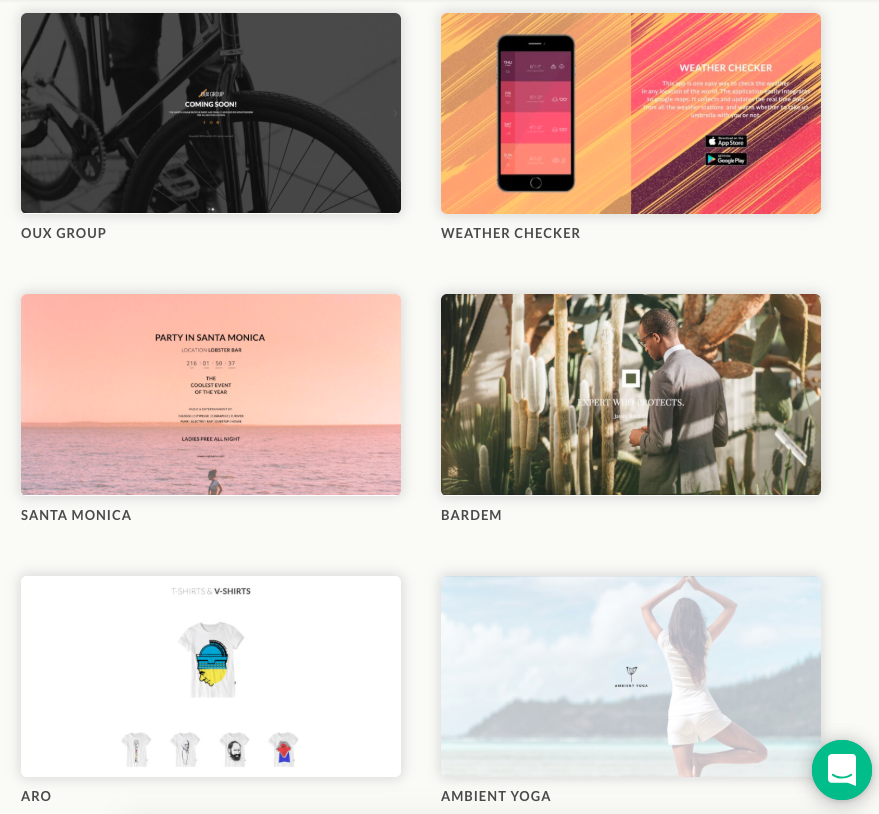
Ucraft’s themes are elegant and streamlined. It’s one-page free sites are designed to be a long scroll with anchored sections.
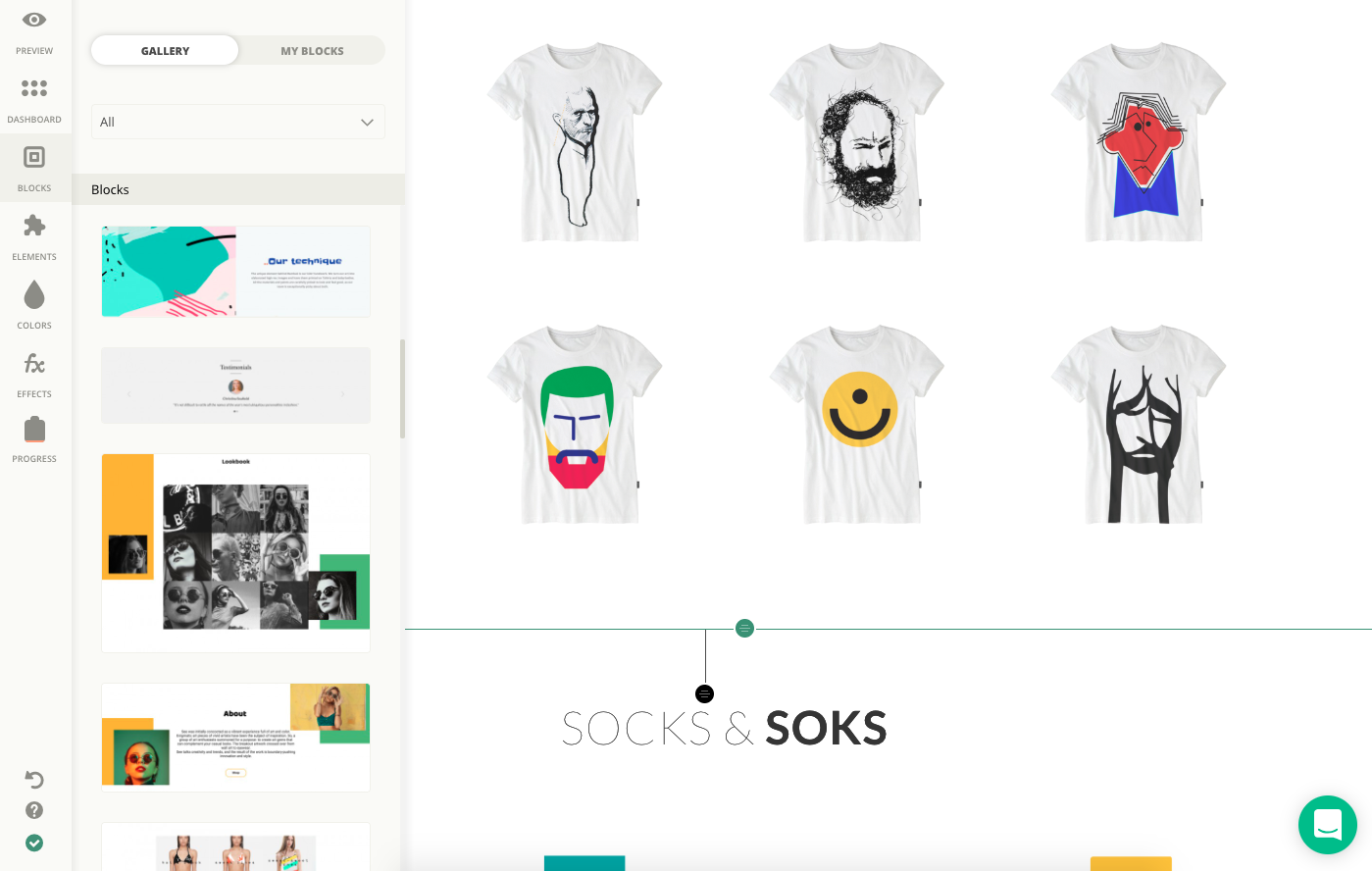
Build a Ucraft site using drag-and-drop blocks and elements.
#3 – GoDaddy
- Drag-and-drop builder
- Starts FREE
- Hundreds of templates
- Basic plan is $9.99/mo
On top of great domain and hosting services, GoDaddy offers a simple and straightforward website builder.
From ecommerce websites to blogs to portfolios, they have tons of different templates to help you create the website that’s right for you.
I think that GoDaddy shines the most when it comes to their ecommerce offerings. They’ll give you tools to book appointments, sell different products and services, and take reservations. Their drag-and-drop website builder makes it incredibly easy to do so too.
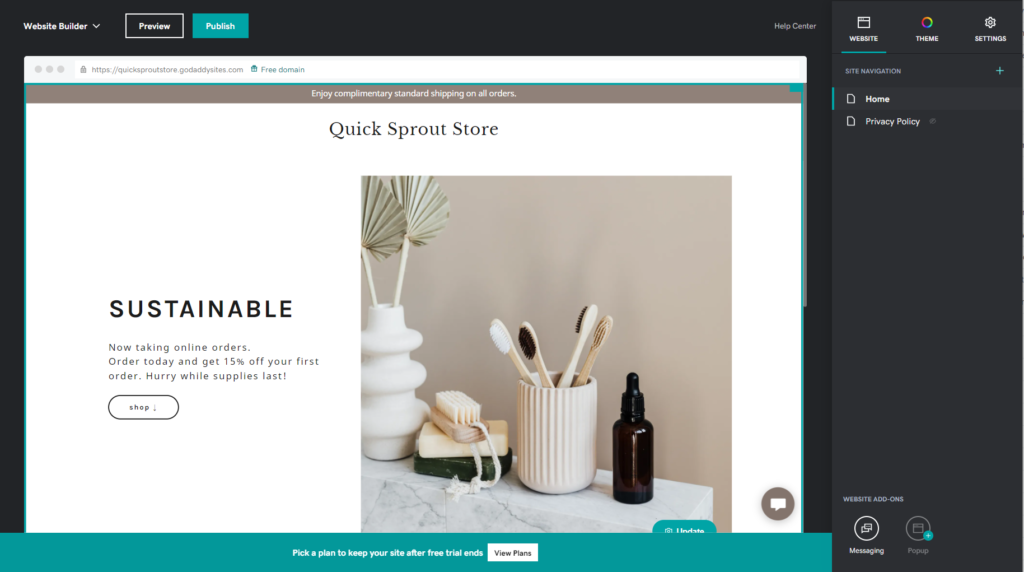
Of course, the free plan does come with a few hiccups. For one, you can only have a GoDaddy-branded domain. It also lacks a lot of the features and tools you’d want if you want to scale your website for optimal revenue such as social media and email marketing tools and SEO tools.
It’s pretty affordable though, with plans starting at $9.99 a month. I highly recommend if you are already using GoDaddy for your domain or web host already. Click here to sign up for free.
Methodology and criteria for my website builder reviews
When reviewing and analyzing the 31 website builders for this post, I took a look a variety of different criteria. Below are the four most important ones in my analysis.
Note: They might differ for you and your business’s needs. However, I find that these four elements tend to be the most important ones for most.
Ease of use. There should be no technical proficiency required and no need for a designer or other outside help. We asked ourselves, How easy it is to get started? And, how long does it take to build a nice looking site?
A professional high-quality final product. A professional, well-designed website that reflects your business. We asked, What do the templates look like? How customizable are those templates? Can I add an ecommerce option to sell things on my site? Can I add a menu? A form? A map? Reservations?
Customer support. We wanted to know that it’d be there if you needed it, but we also expect everything to be intuitive enough that you don’t feel like you can’t go it alone.
Pricing. Pretty simple, but we didn’t just ask how much does it cost? We also asked, Which tier should a person start on and when will they need to upgrade? If it’s free, what’s the trade-off? Does it come with a free domain? Does it come with email addresses? Any other extras to be on the lookout for?
Recap: The best website builders for 2021
I like WordPress with BlueHost Hosting for its ability to run just about any site you can think up. It’s also the best content platform out there. If you have a content site, I recommend building it with WordPress — with a template, it’s not drag-and-drop but it’s already pre-built.
In terms of all-in-one true website builders, I love Wix, Squarespace, GoDaddy, and Zyro.
Need a little less? I was surprised by one-page standout Ucraft.

